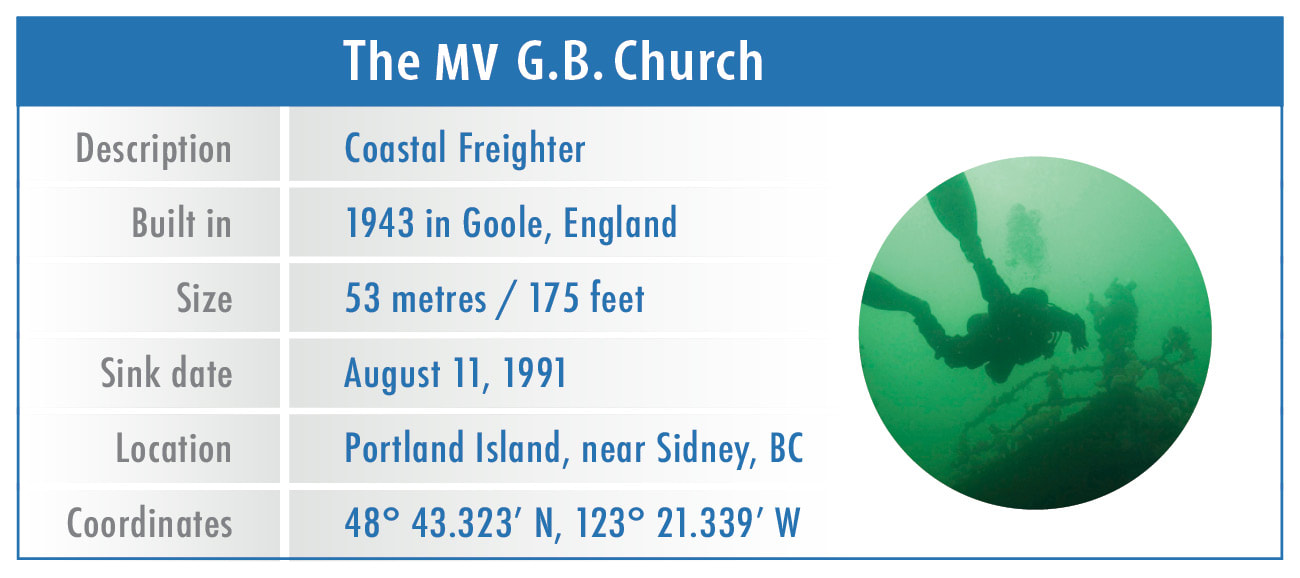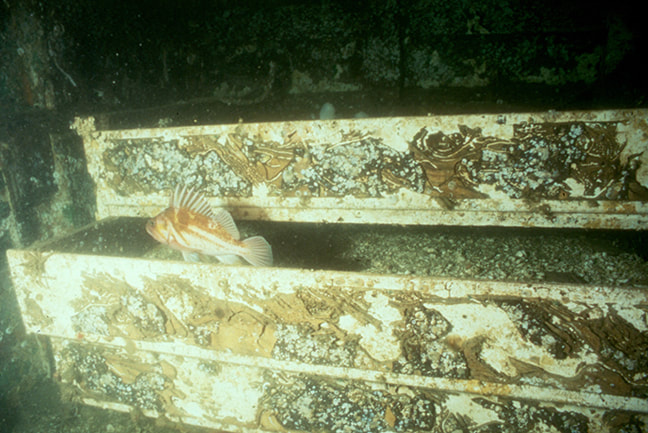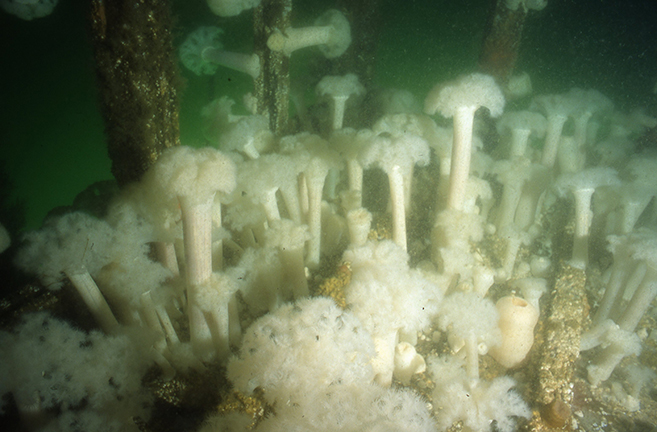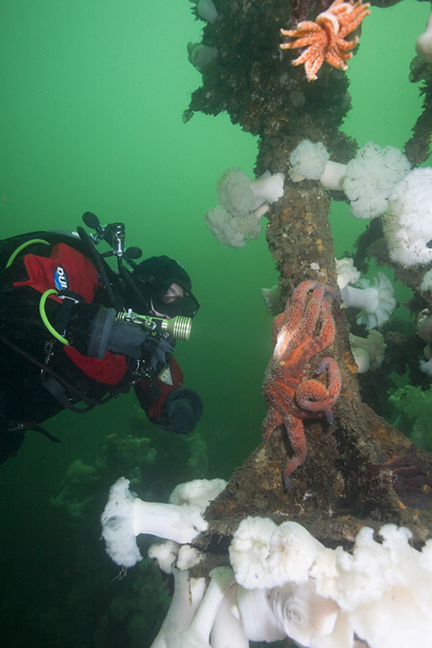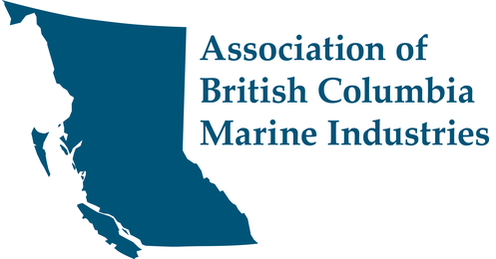|
The G.B. Church was the ARSBC's first project, initiated in 1989. The vessel served an important role as a proving ground for the larger and more complex naval artificial reef projects that were to follow. The G. B. Church project was completed over two years. She was sunk in August 1991 within the boundaries of Princess Margaret Marine Park near Sidney on Vancouver Island.
The preparation for sinking included stripping out the ship down to the steel, cutting holes for diver access, and removing any hazardous obstacles. Diver safety is always a key consideration – confined spaces are either sealed off completely or opened up for easy entry and exit. The final steps in readying the ship for sinking included eliminating all environmental hazards and cleaning all fuel and oil lines in the ship and the bilges. The sinking site was chosen for two reasons: the flat sandy bottom was ideal for landing the ship; and the close proximity to local dive shops ensured an economic spin off from the new diving attraction. The site also met all coast guard and navigation requirements. In its underwater home the ship quickly became a habitat for the rich marine life of the area – including octopus and wolf eel – and attests to the positive impact that artificial reefs have on the marine ecosystem. Not only do artificial reefs promote marine life, they also reduce diver impact on surrounding natural and historical shipwreck dive sites by diverting diver traffic. A movie by the National Geographic Society - Search for the Giant Octopus, featuring the GB Church
|
Dive the MV G.B. Church with Dirk De keersmaecker
|
